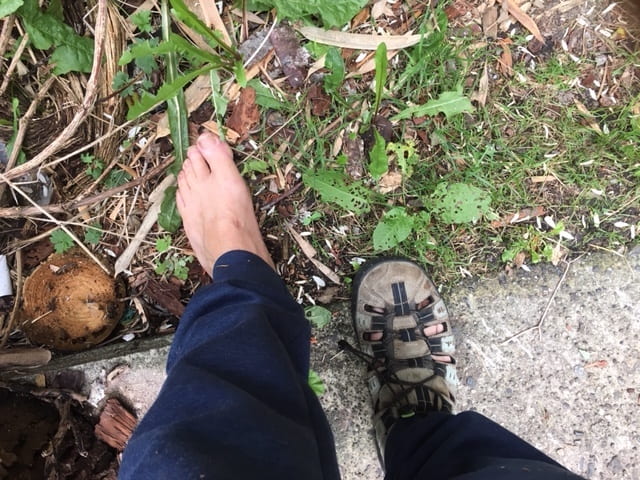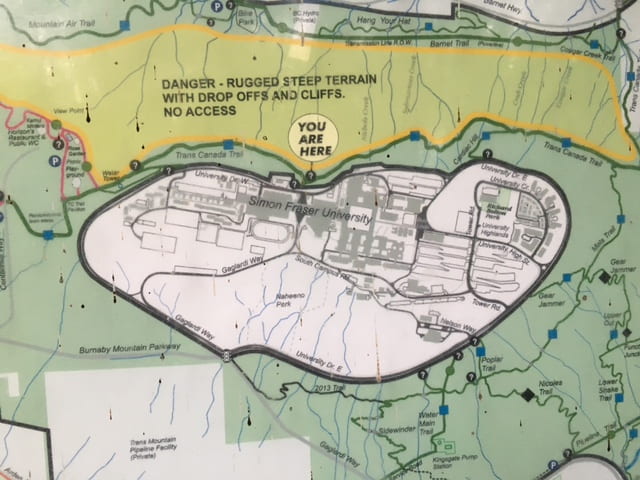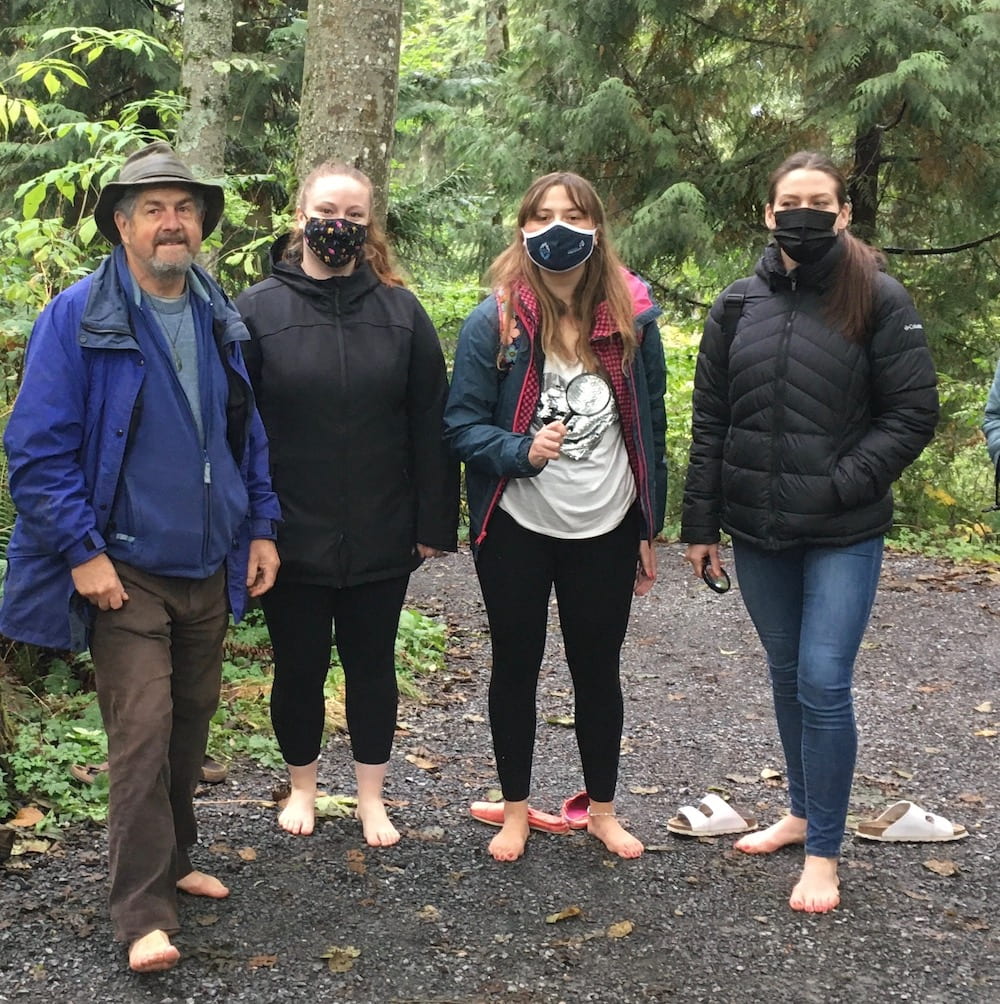By Michael Maser (PHD Candidate, Faculty of Education, SFU; Career educator and sustainability advocate)
Walking is a highly intelligent activity. This intelligence, however, is not located exclusively in the head but is distributed throughout the entire field of relations comprised by the presence of the human being in the inhabited world. ~ Timothy Ingold (2004)
To walk barefoot outside in any season other than summer in the Northern Hemisphere is to risk being ridiculed. But the soles of our feet, possessing at least four kinds of sensory cells, afford us a way to perceive and attend to immediate and conjectured worlds in radically different ways than when our feet our clad and protected.

This essay reflects a unique ‘barefoot’ walking tour recently completed at SFU’s Burnaby Mountain campus. Its goal was to help introduce campus ‘tourists’ to an environment rarely included in campus orientations and also open up possibilities for perceiving the world in different ways. Our tour comprised several sensory-building activities, including walking barefoot and also focusing on using our hearing and vision as organs of exploring and perceiving.
Two Contrasting Environments
Maps of SFU’s Burnaby Mountain campus (below) commonly focus on and prioritize the built and very modified human environment, including classrooms, walkways and gathering spaces. Names are affixed to main buildings, playing fields and utility spaces such as parking lots, and a campus visitor, student or staff member might easily be persuaded that these amount to the sum total of ‘things’ to be encountered when visiting the Burnaby Mountain campus. Of course, this situation is replicated on many if not most other modern university campuses, too.

The area outside of the campus perimeter or ‘ring road’ is often only identified on maps in washed-out colours and commonly unidentified or titled ‘Burnaby Mountain Conservation Area.’ Some other maps identify it as a ‘dangerous’ area due to its terrain. Cement and asphalt mark the boundary with this mysterious area and, while some people venture onto its trails, few venture into it to experience it in an off-trail fashion.
Truthfully, this little-known area is not “dangerous” but the site of a magnificent west-coast, mid-high elevation forest, full of towering conifers, maple and alder trees, lower story growth of bushes producing berries, flowers and essences, and ground-level fauna including countless varieties of mushrooms. This forest is home to numerous mammals and birds, and myriad insect species, and it also was the site where generations of First Nations people lived and gathered plants and foods (est. 9K years). Like all west coast forests, this area stores a vast quantity of carbon in its accumulated, and growing, biomass, and its trees and plants follow a diurnal cycle of producing and exhaling oxygen and carbon dioxide gases.
To walk barefoot in the forested area is to literally re-connect with this land and all the vital components that comprise it – accumulating leaves and branches, mosses and lichens, and microfauna and microflora – and evolve through the seasons. Walking here, it is also possible to re-connect, imaginatively, with other cultures that prize this environment as their ‘home’ now and have done so for thousands of years. Stopping to listen, intently, as we did on our tour, also revealed a symphony of natural sounds – wind soughing through trees, birdsong, frog croaks, and creaking branches. Likewise, when we stopped to carefully examine the natural environment here with the help of magnifying glasses, we saw myriad things we ordinarily miss when walking, jogging or cycling through this area.
In contrast, the built environment of campus is where another environment can be conjectured, that of modernity and its fixation on dominance of nature and prizing of intellectual knowledge. A region that fosters “life of the mind” but not the living processes that produce oxygen, soil or forests.

Problem and Resolution
We are currently facing an incredible crisis, worldwide, based in climate change, that portends disaster should we fail to act in ways that may mitigate these looming problems. Many experts agree that a cause of this problem lies in a mistaken belief that humans are somehow distinct from nature, a belief that has led to increasing dis-connection from the natural worlds that authentically sustain us.
Technological solutions to climate change problems are surely welcome but technology alone won’t do much to foster greater connectivity to natural worlds.
As all of the people participating in our recent ‘Bottoms Up’ tour, agreed, going for a walk, especially a barefoot walk, is an important way to start re-connecting with nature and deepen appreciation for this under-recognized area. My invitation to you is to try this where you live.
Reference
Ingold, T. (2004). Culture on the ground: The world perceived through the feet. Journal of Material Culture, 9(3), p. 333.

